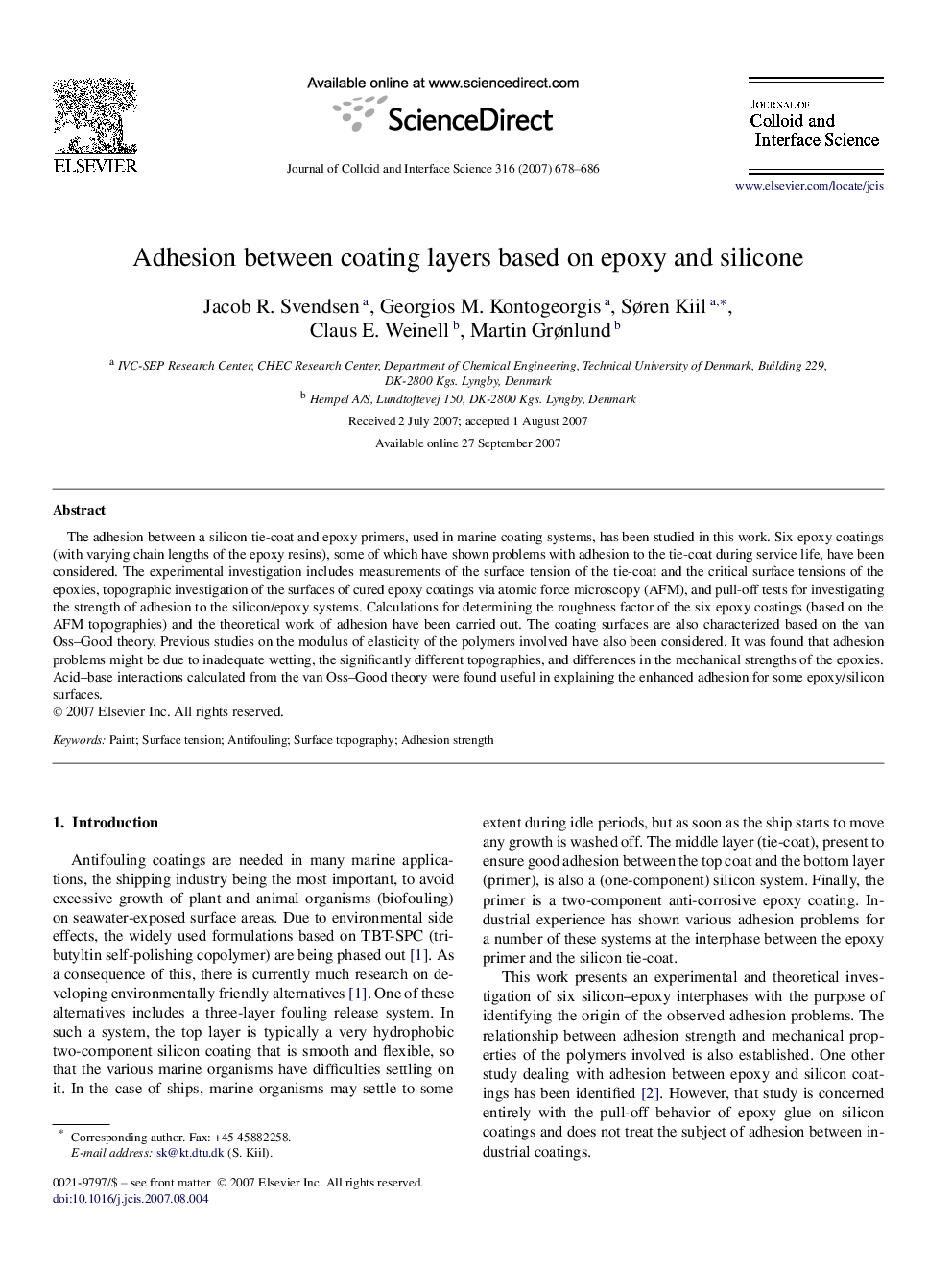| Article ID | Journal | Published Year | Pages | File Type |
|---|---|---|---|---|
| 612054 | Journal of Colloid and Interface Science | 2007 | 9 Pages |
The adhesion between a silicon tie-coat and epoxy primers, used in marine coating systems, has been studied in this work. Six epoxy coatings (with varying chain lengths of the epoxy resins), some of which have shown problems with adhesion to the tie-coat during service life, have been considered. The experimental investigation includes measurements of the surface tension of the tie-coat and the critical surface tensions of the epoxies, topographic investigation of the surfaces of cured epoxy coatings via atomic force microscopy (AFM), and pull-off tests for investigating the strength of adhesion to the silicon/epoxy systems. Calculations for determining the roughness factor of the six epoxy coatings (based on the AFM topographies) and the theoretical work of adhesion have been carried out. The coating surfaces are also characterized based on the van Oss–Good theory. Previous studies on the modulus of elasticity of the polymers involved have also been considered. It was found that adhesion problems might be due to inadequate wetting, the significantly different topographies, and differences in the mechanical strengths of the epoxies. Acid–base interactions calculated from the van Oss–Good theory were found useful in explaining the enhanced adhesion for some epoxy/silicon surfaces.
Graphical abstractInvestigation of intercoat adhesion properties of a marine antifouling coating system. Figure shows transient development of surface tension of six different epoxy coatings.Figure optionsDownload full-size imageDownload as PowerPoint slide
